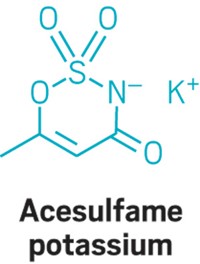Advertisement
Grab your lab coat. Let's get started
Welcome!
Welcome!
Create an account below to get 6 C&EN articles per month, receive newsletters and more - all free.
It seems this is your first time logging in online. Please enter the following information to continue.
As an ACS member you automatically get access to this site. All we need is few more details to create your reading experience.
Not you? Sign in with a different account.
Not you? Sign in with a different account.
ERROR 1
ERROR 1
ERROR 2
ERROR 2
ERROR 2
ERROR 2
ERROR 2
Password and Confirm password must match.
If you have an ACS member number, please enter it here so we can link this account to your membership. (optional)
ERROR 2
ACS values your privacy. By submitting your information, you are gaining access to C&EN and subscribing to our weekly newsletter. We use the information you provide to make your reading experience better, and we will never sell your data to third party members.
Safety
Dissolvable Tobacco Products Show What They're Made Of
Chemical Analysis: Understanding the ingredients in these new products could help to assess their impact on oral health
by Rajendrani Mukhopadhyay
February 24, 2011

In 2009, R. J. Reynolds Tobacco began test marketing smoke-free, spit-free tobacco products in three U.S. cities: Columbus, Ohio, Indianapolis, and Portland, Ore. Researchers now report the first chemical characterization of dissolvable tobacco products to identify what is in them (J. Agric. Food Chem., DOI 10.1021/jf103295d).
Tobacco companies are introducing smokeless products as cigarette use decreases and laws prohibiting smoking increase. Researchers are concerned that the products might cause oral cancer or other oral health problems. John Goodpaster, an analytical chemist at Indiana University-Purdue University Indianapolis, decided to figure out what was in them.
Goodpaster's team performed a slew of solvent and solid-phase extractions to capture as many as possible of the compounds in products including the Mellow and Fresh flavors of Camel Orbs, Mellow Camel Sticks, and Fresh Camel Strips. The researchers analyzed the extracts using gas chromatography/mass spectroscopy. They discovered flavorings like vanillin, binders like stearic acid, and sweeteners like sorbitol. Sorbitol's presence is alarming to dentists, says Goodpaster, because it stimulates cavity-causing bacteria.
The investigators also analyzed the product's nicotine content using a method that the Centers for Disease Control and Prevention has used with other smokeless products. The researchers measured each product's pH and total nicotine concentration and calculated the amount of basic nicotine, which is the form that the body absorbs. Their measurements fell below the nicotine amounts listed on the packaging: For instance, the product literature for a Fresh Orb states that it contains 1 mg of nicotine per tablet but the researchers found 0.77 mg. Goodpaster says this finding raises the question of whether the CDC method is accurate for analyzing smokeless products.
Goodpaster's team plans to collaborate with researchers at Indiana University School of Dentistry to study what happens when oral bacteria are exposed to the cocktail of compounds found in dissolvable tobacco products.





Join the conversation
Contact the reporter
Submit a Letter to the Editor for publication
Engage with us on Twitter